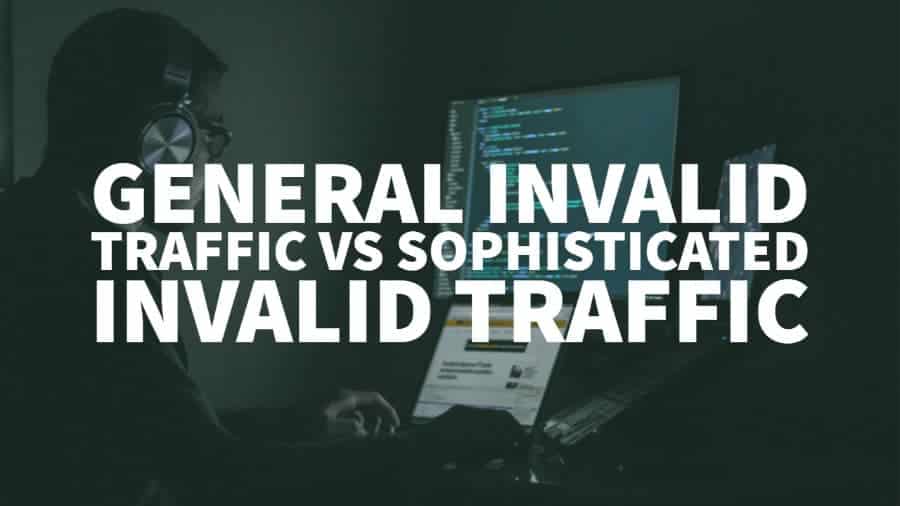
This post was most recently updated on October 19th, 2023
Publishers are constantly on the hunt to maximize their ad revenue but amidst the sea of legitimate clicks and impressions, there lurks an undercurrent that threatens to disrupt the balance – invalid traffic (IVT). If you’re a publisher, understanding the nuances of IVT is crucial not only to protect your revenue but also to maintain your reputation and relationships with advertisers. Let’s dive in to shed light on what invalid traffic is, its different forms, and why it should be on every publisher’s radar.
Google defines invalid traffic as traffic that either does not come from a real user or one without a genuine interest in the website/product/service. It can come in the form of accidental clicks, fraudulent clicks, bot traffic, crawlers, and other more sophisticated means.
From a Google AdSense point of view, invalid traffic is seen as a method of artificially inflating a publisher’s ad earnings through bots, publishers encouraging ad clicks as well as accidental clicks. This is all against the Google AdSense terms of service and can lead to a publisher getting banned. Read more about that over here.
There are also generally two types of invalid traffic, or IVT called general invalid traffic (GIVT) and sophisticated invalid traffic (SIVT). Let’s take a closer look at both below:
General invalid traffic is a classification of IVT that is easy to identify. Lists of spiders, crawlers, and robots together with routine checks can be used to identify and filter it out.
As the classification states, sophisticated invalid traffic is a lot more technical and harder to catch. It usually requires advanced analytics and significant human intervention to identify, analyze, and prevent.
This can include but is not limited to bots and spiders looking like human visitors, hijacked devices, hijacked sessions with hijacked devices, invalid proxy traffic, adware, malware, fraudulent incentivized promotion, falsely represented sites that present themselves for legal purposes, cookie stuffing, manipulation/falsification of location data and more.
Although invalid traffic and ad fraud are dangerous to a publisher’s ad earnings, Google is unfortunately very vague about how publishers should deal with it. Usually, their advice includes something along the lines of checking Google Analytics and being careful of the traffic sources publishers use.
However, both options aren’t preventative. A lot of IVT comes from sources that publishers don’t even intend to get traffic from. Google does not mention how to proactively block invalid traffic from unintended traffic sources which are a massive threat for publishers.
That’s why MonetizeMore has launched Traffic Cop. Through advanced machine learning and sophisticated fingerprinting algorithms, our ad engineering teams can identify, classify, analyze, and block different kinds of non-human traffic and ad fraud. Traffic Cop doesn’t just block general IVT like some free tools, it fingerprints and blocks sophisticated IVT to keep your site safe from getting banned by Google AdSense or any other ad network.
Many solutions only provide an ad fraud report after the auction is complete, but then it’s too late. You need to restrict ads from serving to invalid traffic to prevent network ad bans and ad revenue deductions.
Through Traffic Cop, pre-bid analysis block ads from serving to invalid traffic sources. You’ll also be able to gain a deeper level of understanding of the different levels of fraud traffic your website receives to weed out the bad traffic sources.
Are you struggling with invalid traffic, bots, and ad fraud? Do you as a publisher want to make sure that your ad network accounts stay safe and not risk losing your hard-earned ad revenues?
Let MonetizeMore help. We’ve developed Traffic Cop, a state of the art ad traffic solution to detect, prevent, and filter out invalid traffic. For more information, sign up for Traffic Cop today!
The best way to stop invalid traffic is by using a traffic blocker, but some are better than others. MonetizeMore realized that not only was general IVT (simple bots and crawlers, detectable by routine checks) a real problem for publishers, so was sophisticated IVT (traffic that tries to present itself as human. We have a more detailed description in the article) and launched Traffic Cop to actively classify and block IVT, thus preventing revenue and account loss.
Google’s definition of Invalid traffic is traffic that does not come from a human or traffic that comes from a human with non-genuine motives (e.g. an accidental click on to a page). For Adsense, all visits to a page where an advertiser pays to have an advert on the page should provide sufficient value to that advertiser. Non-human traffic, such as bots and site crawlers, are of no use to an advertiser.
Google is understandably very cagey about its methods for detecting invalid traffic, as it doesn’t want these measures to be circumvented. However, multiple clicks or visits from the same source or a rapid or consistent pattern might be seen as suspicious. Google also checks for things like known malware.
Google recognizes that accidental clicks do sometimes occur, so if you happen to click on your site once and generate an impression, it’ll likely make no difference. However, consistent or repeated instances are likely to raise flags, so limit this activity where possible; when working on a new page or section, make sure Adsense code is disabled or ad units are not targeted by Adsense, and/or limit development to a test site only.

With over ten years at the forefront of programmatic advertising, Aleesha Jacob is a renowned Ad-Tech expert, blending innovative strategies with cutting-edge technology. Her insights have reshaped programmatic advertising, leading to groundbreaking campaigns and 10X ROI increases for publishers and global brands. She believes in setting new standards in dynamic ad targeting and optimization.
10X your ad revenue with our award-winning solutions.